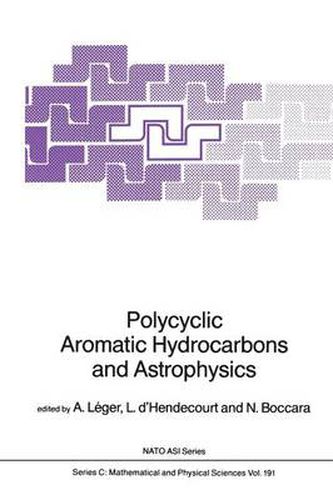Readings Newsletter
Become a Readings Member to make your shopping experience even easier.
Sign in or sign up for free!
You’re not far away from qualifying for FREE standard shipping within Australia
You’ve qualified for FREE standard shipping within Australia
The cart is loading…






This title is printed to order. This book may have been self-published. If so, we cannot guarantee the quality of the content. In the main most books will have gone through the editing process however some may not. We therefore suggest that you be aware of this before ordering this book. If in doubt check either the author or publisher’s details as we are unable to accept any returns unless they are faulty. Please contact us if you have any questions.
The near Infra-Red emission of the Interstellar Medium is a very puzzling subject. In the brightest regions, where spectroscopic observa tions are possible from the ground, several bands (3.3 - 3.4 - 6.2 - 7.7 - 8.6 - 11.3 ~m) have been observed since 1973. The absence of satisfying explanation was so obvious that they were called Unidenti fied IR Emission Bands . The puzzle still increased when were known the first results of the general IR sky survey made by the satellite IRAS. On a large scale, the near IR emission of the Interstellar medium was expected to be very small but it was observed to be about one third of the total IR emission for our own galaxy ..* The situation has moved in 1984 when it was suggested that a class of stable organic molecules, the Polycyclic Aromatic Hydrocarbons (PAH’s) could be at the origin of this near IR emission. Initially based on the required refractory character of particules that should be heated to high temperature without subliming, this hypothesis leads to a sugges tive spectroscopic similarity with the observed astronomical bands. This hypothesis is attractive and it has many implications, for ins tance, the PAHs would be the most abundant organic molecules in the universe. However, many points have to be clarified and the different consequences of this suggestion should be explored.
$9.00 standard shipping within Australia
FREE standard shipping within Australia for orders over $100.00
Express & International shipping calculated at checkout
This title is printed to order. This book may have been self-published. If so, we cannot guarantee the quality of the content. In the main most books will have gone through the editing process however some may not. We therefore suggest that you be aware of this before ordering this book. If in doubt check either the author or publisher’s details as we are unable to accept any returns unless they are faulty. Please contact us if you have any questions.
The near Infra-Red emission of the Interstellar Medium is a very puzzling subject. In the brightest regions, where spectroscopic observa tions are possible from the ground, several bands (3.3 - 3.4 - 6.2 - 7.7 - 8.6 - 11.3 ~m) have been observed since 1973. The absence of satisfying explanation was so obvious that they were called Unidenti fied IR Emission Bands . The puzzle still increased when were known the first results of the general IR sky survey made by the satellite IRAS. On a large scale, the near IR emission of the Interstellar medium was expected to be very small but it was observed to be about one third of the total IR emission for our own galaxy ..* The situation has moved in 1984 when it was suggested that a class of stable organic molecules, the Polycyclic Aromatic Hydrocarbons (PAH’s) could be at the origin of this near IR emission. Initially based on the required refractory character of particules that should be heated to high temperature without subliming, this hypothesis leads to a sugges tive spectroscopic similarity with the observed astronomical bands. This hypothesis is attractive and it has many implications, for ins tance, the PAHs would be the most abundant organic molecules in the universe. However, many points have to be clarified and the different consequences of this suggestion should be explored.